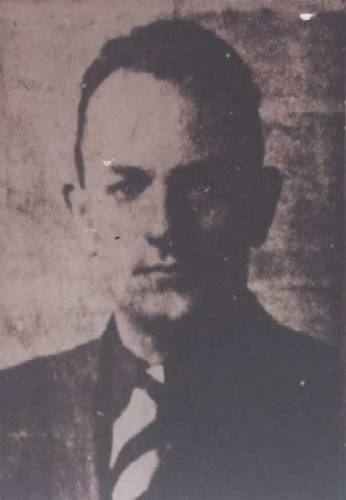Name Rudolf Mildner | ||
 | ||
Rudolf Mildner (July 7, 1902 – 1953?) was an Austrian-German SS-Standartenführer who served as the chief of the Gestapo at Katowice and who was the head of the political department at Auschwitz, conducting "third degree" methods of interrogation from March 1941 until September 1943. As such, he frequently sent prisoners to Auschwitz for incarceration or execution. He visited Auschwitz on several occasions. In December 1944, he was appointed chief of the SiPo, Gestapo and SD in Vienna. After the war, Mildner testified at the Nuremberg Trials and remained in custody until 1949.
Contents
Early life
Born in Johannestal, Austrian Silesia, Mildner served as a volunteer in the Austro-Hungarian Navy during World War I. After the war, Mildner served in the Freikorps Sudetenland. Mildner trained to become a police officer in Salzburg. In 1925, he entered the Austrian police service. During that time Mildner furthered his education by attending night school.
Nazi career
He became a member of the NSDAP in 1931 with number 614,080. He achieved a doctorate of law at the University of Innsbruck in 1934. In 1935 he was forced to leave Austria and move to Germany. There he became a German citizen and entered the SS (number 275,741). Milder obtained a position in the political police department in Munich.
After the 1938 Anschluss, Mildner became chief of the Gestapo in Linz and in 1939 in Salzburg, Austria. From December 1939 to early 1941 he led the Gestapo at Chemnitz. In March 1941 he was named as the head of the Gestapo in Katowice. It was through this office that Mildner became connected to the concentration camp at Auschwitz and served as head of a "kangaroo court" which sentenced some 2,000 Poles to death. In 1942, he received the War Merit Cross, 2nd class for fighting the enemies of the Reich.
In September 1943, Mildner was transferred to occupied Denmark as Gestapo chief to fight the Danish resistance movement and organize the deportation of the Danish Jews. Mildner oversaw security in Denmark in 1943 when the deportation of the Jews failed. 95% of them succeeded in sailing safely to neutral Sweden. This failure was held against Mildner and he was transferred out of Denmark in January 1944. He then served as Inspector of the SiPo and SD in Kassel.
From March 1944 to June 1944 he was Deputy Chief of sub-offices IVA and IVB (Enemies of the Regime & Activities of the Sects and Churches) in the RSHA. In December 1944, he was appointed the successor of Franz Josef Huber as chief of the SiPo, Gestapo and SD in Vienna. In this capacity, he was responsible for the court-martial and subsequent execution of resistance fighters Major Karl Biedermann, Captain (Hauptmann) Alfred Huth und First Lieutenant (Oberleutnant) Rudolf Raschke, who had tried to save Vienna from destruction by handing the city over to the Allies. After Vienna was captured by the Russians, Mildner returned to Linz where he was the deputy of Franz Josef Huber. In May 1945, he escaped to the west and was arrested by the American army and testified at the Nuremberg Trials. The U.S. Army detained Mildner and "saved him from landing in the hands of war crimes investigators, because his knowledge of communist subversion was considered useful."
Nuremberg trials
At Nuremberg he testified with regards to Ernst Kaltenbrunner. Mildner declared that while he was Gestapo leader at Katowice he frequently sent prisoners to Auschwitz for imprisonment or execution. He visited Auschwitz on several occasions and was shown the extermination installations. Mildner stated that he had tried to prevent the Jewish persecution in Denmark but was overruled by Himmler. He was released in 1949 and disappeared to escape prosecution. His place and date of death are unknown; Adolf Eichmann claimed to have met Mildner in Argentina in 1958, but this claim has not been verified.
